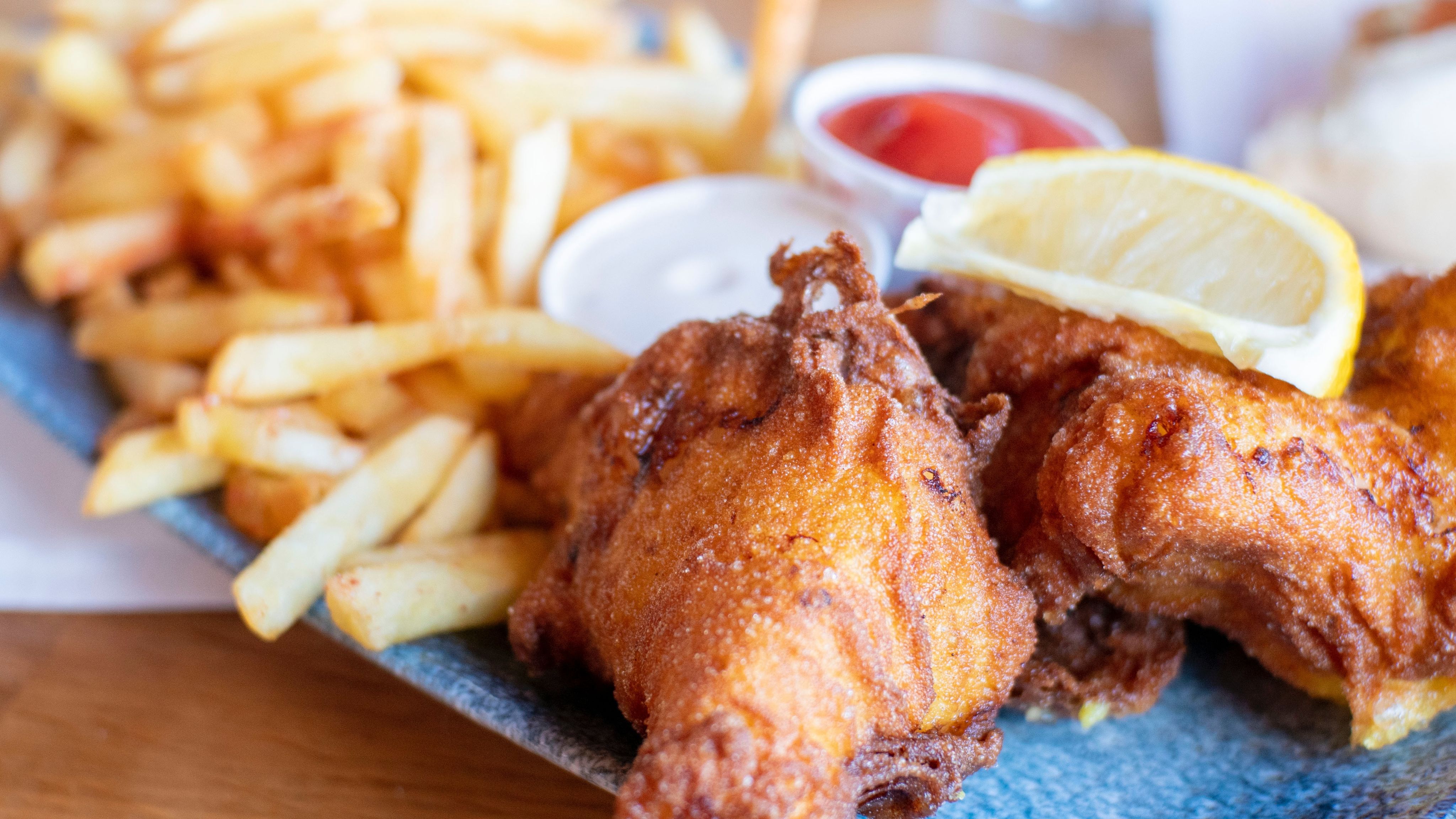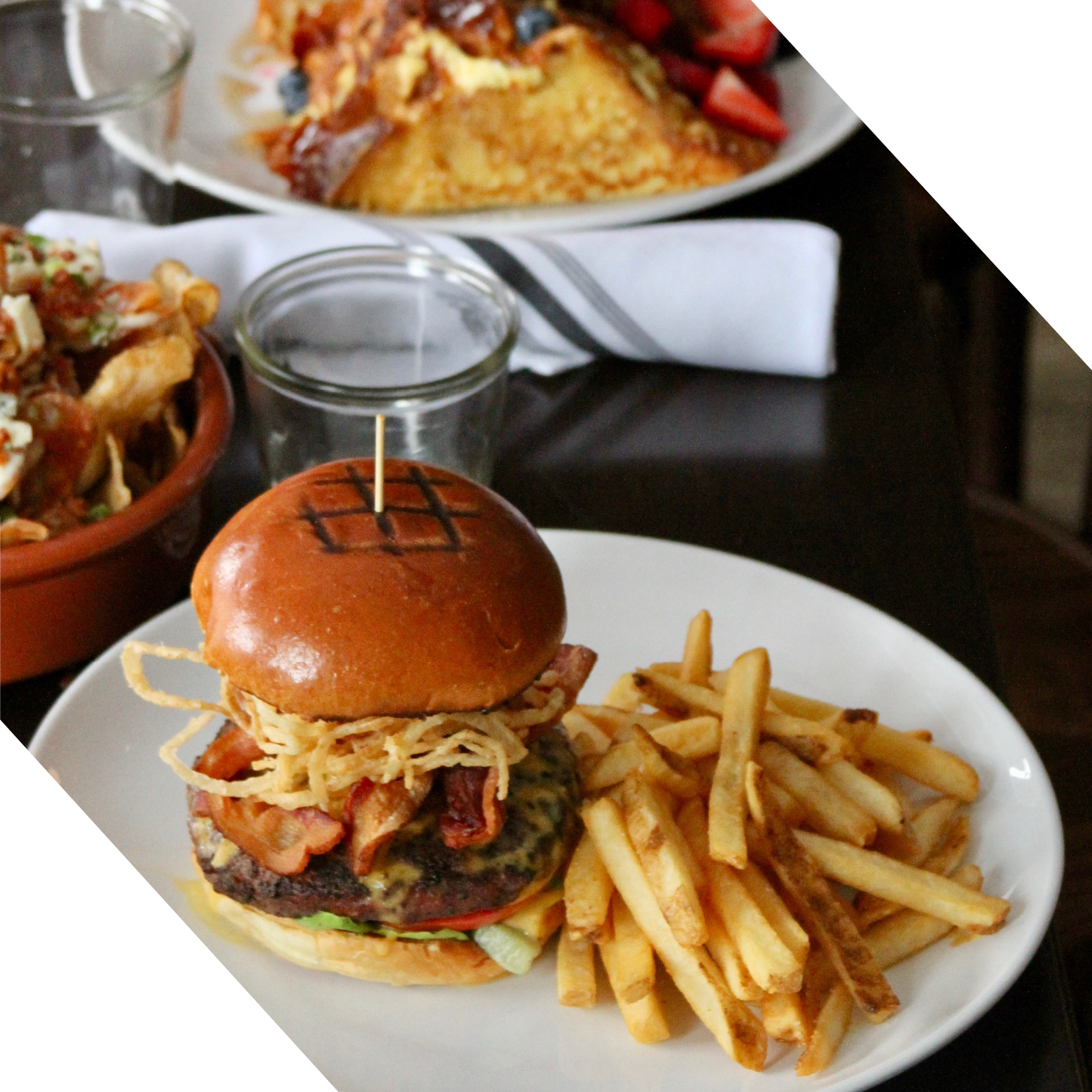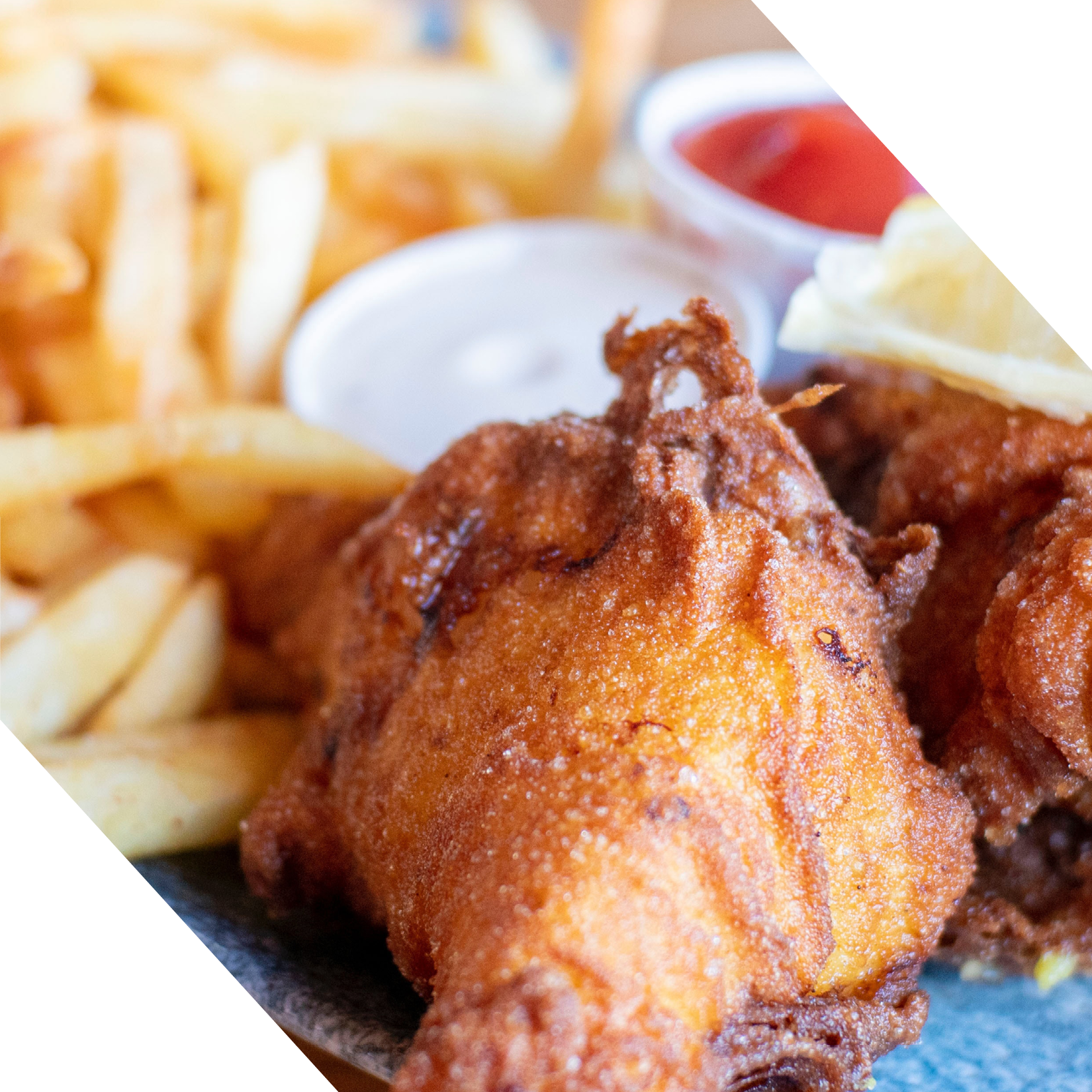How the out of home food sector views healthy interventions
Customer demand, cost pressures, skills, knowledge and legal obligations all affect the industry’s view of healthier food options

For hospitality and food retail businesses, customer demand is key when it comes to healthier food options. Businesses cite a lack of customer demand as the reason they don’t promote or include more healthier options and that either an increase in demand for healthier food from their customers or mandatory legislation is needed to encourage any change.
To understand how the out of home (OOH) sector could improve our food environments and our health, Nesta carried out a survey of sector businesses and a series of interviews with businesses and industry bodies.
The OOH sector includes any food or drink purchased for immediate consumption outside the home, including takeaway or home-delivered food.
That can mean restaurants, quick service restaurants such as fast food chains or takeaways, pubs, coffee shops, petrol stations, bars, hotels, cinemas, vending machines, public transport, workplaces, colleges or universities and retail outlets.
We found that customer demand had by far the strongest influence on businesses. But other factors such as cost pressure, the effect of the cost of living crisis for customers, the scope for healthier options within a cuisine or business type, legal obligations, legislation and confusion about what defines ‘healthy food’ all play a role in how OOH businesses approach healthier food.
The obesity crisis
As much as 63% of the UK adult population is overweight or living with obesity. Scotland has the highest levels of obesity of all UK nations and, with deaths attributable to obesity now at 23% due to its contribution to chronic illnesses such as cancer, diabetes and heart disease, obesity is the leading cause of death in Scotland. The health crisis caused by excess weight is urgent.
Our diets are heavily influenced by the availability and convenience of food, prompts in our environment and the social and information landscape around us. This is our food environment and OOH outlets are a key part of that food environment.
In Scotland, we spend £3.6bn each year on OOH food and drinks with an average of 2.9 trips each a week, equating to more than a quarter of the total Scottish spend on food and drink.
The calorie content of OOH foods is often higher than that of food eaten at home as portion sizes are often bigger and foods are typically high in fat, sugar and salt. A quarter of the calories consumed come from food eaten in the OOH sector in Scotland, which means it contributes significantly to high levels of excess weight and obesity.
Public Health Scotland and Food Standards Scotland are developing a voluntary Eating Out, Eating Well Framework as part of the Diet and Healthy Weight: Out of Home Action Plan. It’s being created in consultation with stakeholders including industry and local authorities and will include guidance and support for measures such as calorie labelling and a children’s menu code of practice.
The Welsh Government ran a consultation on healthy food environments in 2022 which included a focus on out of home and received responses on issues such as calorie labelling and soft drink refills. In England, mandatory calorie labelling came into force for OOH businesses with more than 250 employees in April 2022 which followed on from the publication of a toolkit for local authorities and small businesses for encouraging healthier OOH food provision by Public Health England.
Given the severity of the obesity crisis in Scotland, and across the UK, and the significant impact the OOH sector has on the nation’s diet, we wanted to understand what businesses thought about its role in tackling the issue.
Who responded to our survey:
- 95 independent out of home businesses were surveyed
- 64% were from Scotland, 31% from Wales and 5% from England
- the highest proportion of the respondents were full service restaurants at 31%
- 24% were takeaways and quick service restaurants
- 20% were cafes and bakeries
- 25% classified themselves as ‘other’, including businesses that identified as both restaurant and takeaway, caterers, and restaurants or outlets based in leisure venues like golf clubs or hotels.
- businesses served a variety of cuisines and food types such as Asian, traditional and modern Scottish, bistro, burgers, fish and chips, fried chicken and pub food.
- businesses interviewed included hotels, cafe’s, fish and chip shops, takeaways and restaurants, as well as industry representatives from the takeaway, sandwich, food to go, Italian food, catering, cafe, restaurant and hospitality sectors.
Measures we asked businesses to consider:
- participating in healthy food accreditations and awards schemes from local authority, public health or trade bodies with promotion
- displaying nutritional and calorie labelling information on menus
- a maximum calorie limit on menu items
- implementing changes to cooking ingredients such as use of less fat, salt and sugar
- implementing changes to cooking process such as different methods of cooking such as grilling instead of deep frying and draining excess oil
- smaller portion sizes are used as the default option
- price promotions on healthier options
- training to support reformulation of recipes to become healthier Introduction of healthier children's menus
- increasing the proportion of fruit and vegetables available or used within cooking
The key issues
Customer demand and perceptions of customer priority
We asked businesses to choose which factors they felt were most important to customers when it came to selecting food at their outlets. While two-thirds of respondents said healthiness was a factor, it was deemed the least important by businesses behind elements such as taste, appearance, portion size and price.
This perceived low-priority status for healthiness feeds into businesses’ view of how important customer demand is as a motivator for making changes to menus or promoting healthier options.
"Generally there is a feeling that there isn’t demand for healthier options, people go to takeaways wanting a ‘treat’ and expecting to get that."
Businesses told us that consumer demand was the biggest influencer on what they included on menus and that a perceived lack of demand meant businesses were less likely to offer healthier options. Many of the businesses we spoke to believed increasing healthier options would result in a fall in sales and reduction in profit. They also said that an increase in customer demand would be a significant motivator to increase healthy food provision.
“Consumers notice health by stealth and it becomes loss of wealth by stealth for the business.”
However, research from Food Standards Scotland has shown that consumers in Scotland do want to see interventions that promote healthier food in the OOH sector.
Surveyed businesses were asked to rate barriers to and facilitators of potential interventions. 'Potential lack of customer demand or interest' was identified as a major barrier. Similarly, 'Customer interest or demand' was consistently ranked as a major facilitator for all interventions.
In these tables, for each intervention businesses that indicated that they haven’t implemented an intervention were asked to choose the facilitators and barriers from a list. Businesses were able to choose more than one. The coloured bars represent the magnitude of response. For example, in the case of ‘Calorie labelling is displayed on menus’, 44% of the businesses that didn’t implement a calorie labelling intervention said that ‘Potential lack of customer demand or interest’ is the strongest barrier for implementing the intervention.
“If customers themselves come in and suggest this, I would be open to it. But in my decades of experience, no one has ever asked for salad.”

“Customers know and come here for what they're getting. We wouldn't make any changes as changing an ingredient or method is essentially changing the dish in itself.”

In these tables, for each intervention businesses that indicated that they haven’t implemented an intervention were asked to choose the facilitators and barriers from a list. Businesses were able to choose more than one. The coloured bars represent the magnitude of response. For example, in the case of ‘Price promotions on healthier options’, 38% of the businesses that didn’t implement a price promotion intervention said that ‘Financial incentives, funding or rewards’ would be the strongest facilitator for implementing the intervention.
The role of government and legislation
Businesses and trade bodies also told us that mandatory legislation requiring the OOH sector to introduce interventions would be the single most effective way to ensure implementation. However, businesses expressed significant concerns about the pressure that this would cause at an already difficult time.
"The focus shouldn’t just be about the presence of healthier options on menus, it should be about driving sales of them."
The businesses and trade bodies we spoke to identified other ways that governments could influence the OOH sector, including public education and awareness campaigns to encourage customers to make healthier choices. However, evidence from other Nesta and Behavioural Insights Team research indicates that information and education drives are not effective interventions to encourage healthier eating.
When it comes to government voluntary frameworks or mandatory legislation being designed and implemented, businesses called for guidance to be well communicated, consistent and for a unified approach to be taken across the sector.
"Government needs to develop and fund large scale hard hitting campaigns to influence customer demand like drink driving and smoking."

"There needs to be consistency of application and logical implementation not political hope. Businesses need to be on a level playing field."
Cost pressures and the cost of living crisis
Small and medium-sized businesses in the OOH sector told us they are facing a number of external pressures which are impacting their willingness and ability to provide healthier options. They cited the rising cost of energy and ingredients, the cost of living crisis impacting customer demand and a lack of available and skilled labour.
It is likely that any interventions in the OOH sector that help to relieve pressures, stimulate profit or come with financial and workforce support will be more acceptable to businesses.
"Interventions such as calorie labelling would have massive costs and effort."
A definition of ‘healthy’
An issue the survey and interviews revealed was the conflicting or inaccurate understanding of what constitutes healthier food. While there was general consensus on an increased offer of vegetables and fruits in the menus, calories were largely seen as irrelevant to most customers according to businesses.
This absence of an objective and agreed definition leads to multiple interpretations of healthfulness of food based on each businesses’ knowledge or beliefs. For example, sometimes healthiness was conflated with dietary choices such as providing vegan options. ‘Healthier’ options were seen as more costly, time consuming and difficult to operationally implement than ‘standard’ menu options.
More accessible support, resources and training would be helpful to increase businesses' understanding of the various aspects of health, relating to their practices and cuisine and provide evidence to support positive change.

"We think our menu is healthy in that it uses real ingredients, nothing artificial. We use butter and full fat milk and full fat cheese because they have the best flavour. We believe it to be healthy to have a fair portion of something delicious, rather than a 'low calorie' option made with artificial sweeteners and artificial flavours."
"It is still fish and chips and there is a limit to what we can do."

Business and cuisine type
Most of the barriers and facilitators identified by businesses were reported across a range of respondents. However, some businesses raised issues they felt affected their trade specifically. For instance, interventions that could be implemented and effective in a fish and chip or fried chicken takeaway are different from ones that work for a coffee shop or a bakery.
Outlets specialising in certain cuisines and traditional recipes said they wouldn’t be able to change ingredients without affecting quality and taste. Interventions, wherever possible should be tailored to the type of business and cuisine served, to support easier implementation.
The out of home sector is a significant contributor to the obesity crisis across the UK. With businesses and organisations in the sector citing a lack of demand from customers and the cost and business pressures that mandatory legislation may create, it is clear that a multilayered approach to improving the OOH food environment is needed.
A vital step is more research to map out what consumers are actually eating, when we are eating it and what motivates our choices – and what might stimulate demand for healthier options, if that is what is needed.
Improving the healthier choices available in the OOH sector will likely require layers of interventions and we need research into which ones will be most effective. For example, recent research from Nesta on calorie reduction suggests small changes – reducing calories in some options by 10% – could have a big effect at a population level.
With the rates of people across the UK living with excess weight and obesity on the rise, what is starkly clear is that urgent action needs to be taken by both the OOH industry and UK’s governments to stem the tide of unhealthy food.